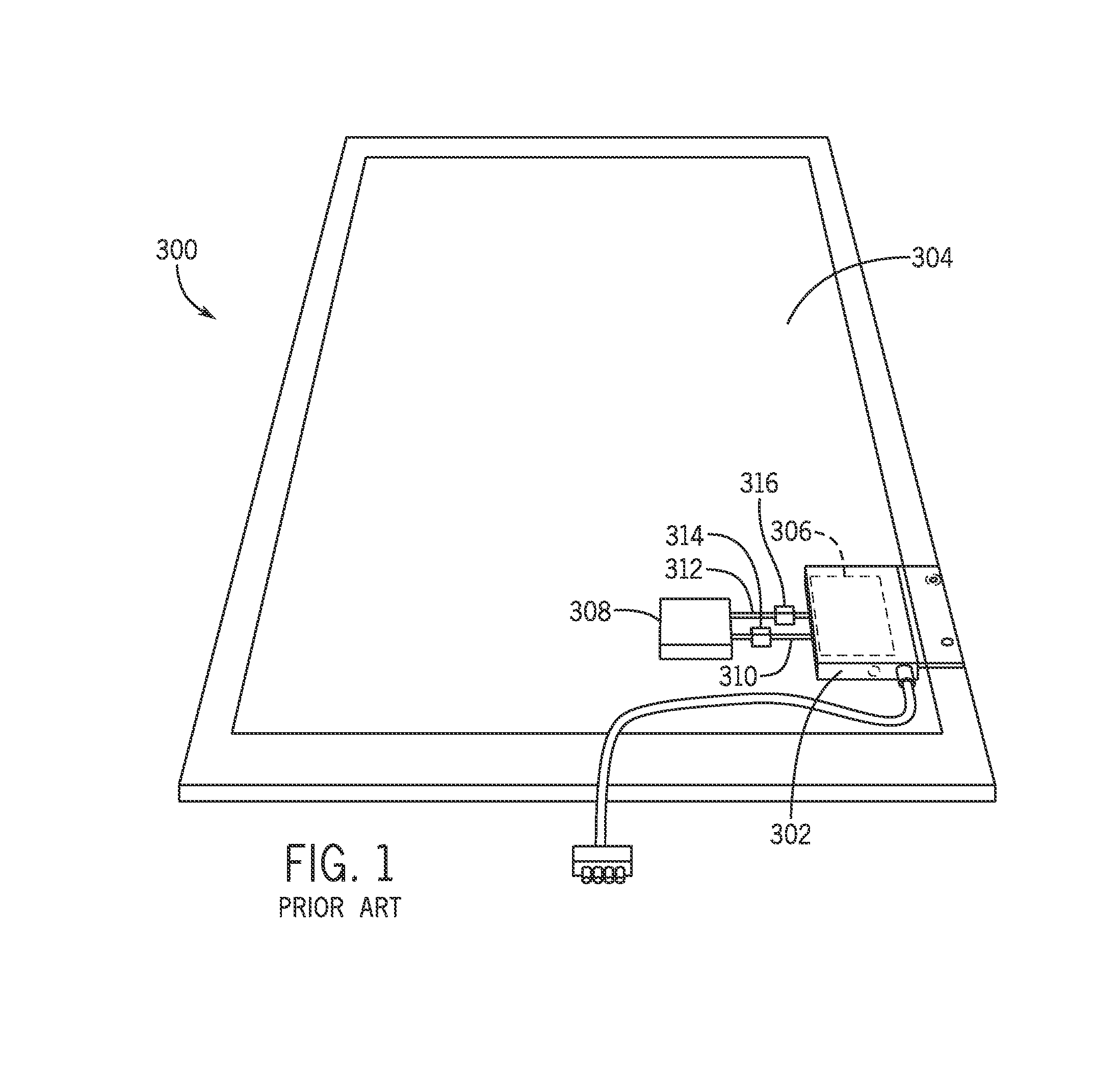Photovoltaic system with improved DC connections and method of making same
a photovoltaic and dc connection technology, applied in the direction of pv power plants, electrical apparatus construction details, electrical apparatus casings/cabinets/drawers, etc., can solve the problems of reducing the load, ac pv module overheating, and typical ac pv module making infield repairs time-consuming and labor-intensiv
- Summary
- Abstract
- Description
- Claims
- Application Information
AI Technical Summary
Benefits of technology
Problems solved by technology
Method used
Image
Examples
Embodiment Construction
[0032]Referring now to FIG. 3, a PV system 10 is illustrated according to an embodiment of the invention. PV system 10 includes a first row 12 containing at least one AC PV module 14 and a second row 16 containing at least one AC PV module 18, and a rail system 20 that includes a number of support bars, as described in detail below. In the embodiment shown in FIG. 3, the first row 12 of PV system 10 includes five (5) AC PV modules 14, and the second row 16 of PV system 10 includes five (5) AC PV modules 18. However, one skilled it the art will appreciate that embodiments of the invention are not limited to rows 12, 16 having a particular number of AC PV modules 14, 18. Thus, according to alternative embodiments, rows 12, 16 may include any desirable number of AC PV modules 14, 18 depending on design specifications and applicable limitations imposed by the National Electrical Code (NEC). Further, PV system 10 may have more or less than two (2) rows of AC PV modules, according to alte...
PUM
| Property | Measurement | Unit |
|---|---|---|
| voltages | aaaaa | aaaaa |
| rotation | aaaaa | aaaaa |
| adhesive | aaaaa | aaaaa |
Abstract
Description
Claims
Application Information
 Login to View More
Login to View More - R&D
- Intellectual Property
- Life Sciences
- Materials
- Tech Scout
- Unparalleled Data Quality
- Higher Quality Content
- 60% Fewer Hallucinations
Browse by: Latest US Patents, China's latest patents, Technical Efficacy Thesaurus, Application Domain, Technology Topic, Popular Technical Reports.
© 2025 PatSnap. All rights reserved.Legal|Privacy policy|Modern Slavery Act Transparency Statement|Sitemap|About US| Contact US: help@patsnap.com



